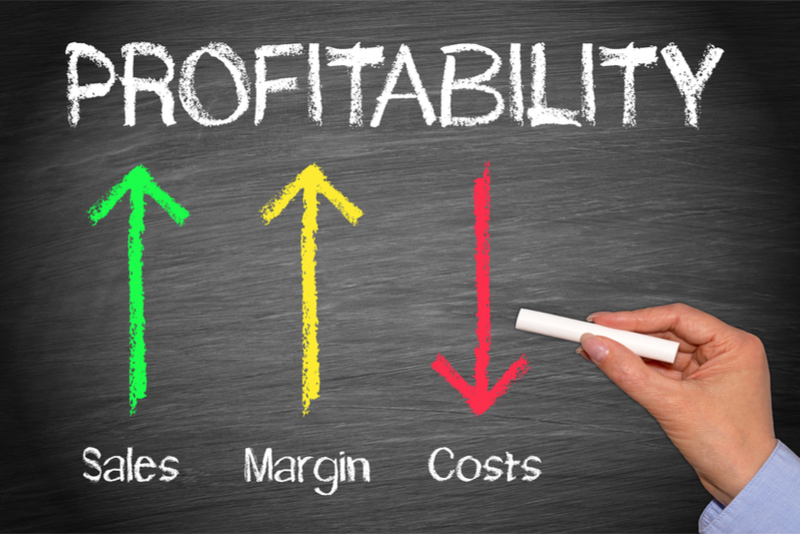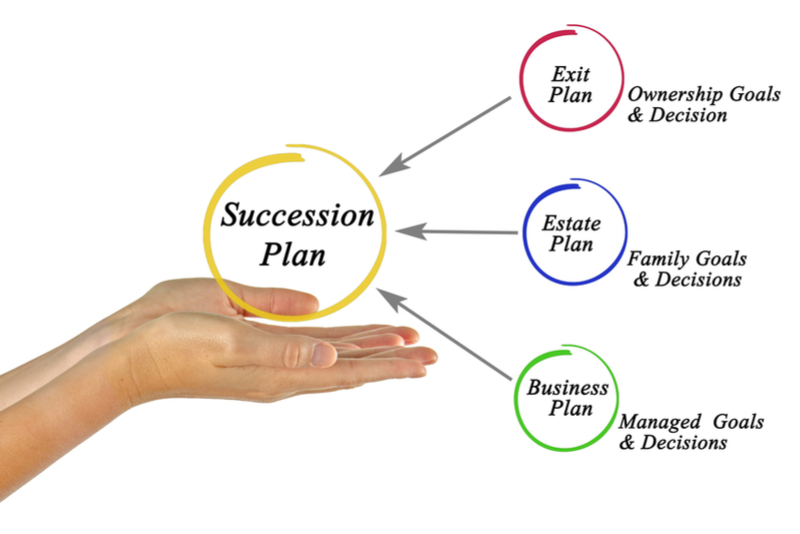
How To Price Your Product Or Service
How Much is Too Much? – Working out the Ideal Price
We are entering an era where businesses such as Amazon and other large, online retailers are providing serious price competition to existing businesses. To remain viable, small businesses need to focus on the value they, as a small business, can add to the sale, and then profit from that additional value.
Most of us, as consumers, have a fairly good idea of what we are prepared to pay for a product/service. But, as a business operator, the question is, how can we find out what that price is? And why is that price different from customer to customer?
So, how do we determine what that ideal price is and if our customers are prepared to pay more than the current price?
Factors that affect this include:
1. Determine what you are actually selling. Is it just a basic product/service, or is there more to it than that? Does your product/service come with other benefits? Are there some intangible benefits or feelings that massage the ego of the customer or improves their overall life? What are they?
An example of this is that we know people will pay more for a vehicle from Mercedes, or BMW, compared to a similarly featured vehicle from Hyundai, or Kia. Sometimes the benefits can’t be seen, but as a business, you have the ability to price in a difference based on the perception of the customer.
2. Who is your ideal customer and where does your product/service sit in their personal value chain? Are they prepared to sacrifice other products/services in order to buy yours? If so, to what extent?
An example would be, if you sell mattresses, then a customer who is buying for themselves will be more focused on the comfort of the mattress vs the price. Whereas, the same person buying a bed to furnish an investment property would be more focused on the price, rather than the quality. You should be able to extract a higher price from the first scenario.
Most small businesses initially determine their prices by making comparisons to products and services sold by other similar businesses, with scant regard to their costs or desired profit. This is a good starting point but nothing else.
To maintain market share, or to at least maintain profitability, in this changing world, it is important to review what you are selling and what value-adds are attached to your product/service. By determining what your value-adds are, you can then highlight them in your sales process. You need to justify your customer’s purchase decision to buy from you, rather than an online dealer. These value-add items mean that you may also be able to justify a price that is higher than the online retailers, which ensures that your business remains viable and profitable.
Often the value-add is as simple as the face-to-face relationship that you can establish with the customer, reinforcing that what they are buying is exactly what they need/want. For example, a clever shop assistant in a clothing outlet can highlight that an outfit being sold to a customer will be perfect for the upcoming occasion and help them visualise the wonderful experience that the customer will have at the occasion because they are wearing this particular, unique, personalised outfit. Whereas an online website can never achieve that level of personal interaction, focusing rather on colour, size, delivery time and price. That personal service is worth paying for!
Obviously, to run a profitable business, we need our sales revenue to be higher than our costs. For long term success, we need the sales revenue to be repeatable. Therefore, we need to have happy customers who will return to buy from us again and again and who will recommend us to other new customers.
As a business owner, the ideal price is the highest price you can charge a customer and still have the customer feel as though they’ve received value for money. This means that they will happily return because of the perceived value that they have received, but also means that you have maximised your revenue and therefore, hopefully your profit from the transaction as well.
At Potts and Schnelle, we are happy to talk to you about your business model and your marketing ideas. Call us for an appointment on Ph 02 60332233.

Have I got enough insurance?
Insurance – How much is enough?
We had a case recently of a client who was in severe pain from her knee, and needed a replacement. The dilemma for her was that if she took off the 4 months required to recover from a knee operation, then how would they meet their home loan repayments and keep up with their other household costs? She was the primary earner in her family as her husband was suffering from a long running illness and only earning sporadic part time income. She did have 4 weeks of personal leave owing to her, but that wasn’t enough to get them by. They had little in savings, surviving with a growing family on essentially one income.
The good news was that she had taken out Income Protection Insurance many years ago and had maintained the cover even though it was getting quite expensive. The problem was that although she was in pain, she was still functional at work and so the surgery was effectively “elective”. Consequently, she was still capable of earning an income and it was questionable, whether the insurance company would cover her for “lost income”.
We queried the insurance company and they agreed that they would pay her under the policy, even though the operation was effectively elective. She had her operation, the insurance company paid up and she is now back at work pain free and the family finances are no worse off.
The moral of the story is that good quality insurance policies with good quality companies are worth the few extra dollars.
With the New Year upon us, we are recommending that you review your insurances to make sure they are adequate and suitable to your personal needs. Researchers commonly find that most Australians are “chronically under-insured”. That means that they don’t have enough cover and consequently, in the event of their death or illness, they will not only leave an emotional hole in the heart of their family, they will also leave a financial hole in their future.
Most of us have no idea how much insurance is enough so we let someone else make the decision for us. The most common amounts covered are, firstly, to pay out loans (because the bank said it was a requirement) and secondly, the default amount provided by our superannuation funds (because we didn’t make a choice).
There is nothing wrong with that, as something is better than nothing, but really, what is the right amount and will the insurance company pay up when you lodge a claim?
The answer is, it all depends! Answers to the following questions will help you decide how much is right for you:
- How much debt do we have?
- How much savings/superannuation do we have?
- What other financial costs do we have?
- What can we afford?
When determining affordability, remember that generally, premiums get higher as you get older, so consider taking out a level premium option if you think you will need the cover for a long time. Level premiums start out more expensive, but work out cheaper over the long run. Consider splitting the policy with a level premium for long term needs and a stepped (cheaper) premium for short term needs.
If you have an insurance question, give our financial planners a call on 6033 2233, or send an email to financialplanning@potts-schnelle.com.au

A conversation about your Will
Living Well with a Living Will
Christmas is traditionally a happy time to catch up with family and good friends, so talking about death and tragedy is a bit off-side, but if you don’t take the opportunity to discuss it now, time can quickly move on and the opportunity lost.
Here is a list of questions to table at Christmas Dinner, or at least over a Coffee and a piece of Christmas Cake. These are guaranteed to get the conversation flowing:
To your brother/sister
- Have you got an up to date Will in place?
- Who will look after your kids if you die?
If it is you who gets the kids …also ask
- Will there be enough money or should you top it up with Insurance?
To your adult children
Repeat questions 1 – 3 above except also ask
- How can we do that caravan trip around Australia in retirement if we also have your kids (that’s your grandkids) and you are underinsured?
If that stopped the conversation try:
To Grandma
- If you were on life support, what would you want to happen to you medically?
- Who would make those medical decisions for you if you are incapacitated?
- What about financially, who will have the power to pay the bills until you get better?
- Will there be enough money or should you top it up with insurance?
If that goes well, try the same questions 1-4 to
your brother/sister, parents, spouse, next door neighbour!
On a roll….. now go to group loitering around the esky and ask…
the brother-in-law who has his own business
- Have you got any key employees at your business?
- If you or the key employee weren’t able to work for six months, would that cripple your business financially?
- Did you know you can insure against that?
……. If you take our advice and use these questions over the Christmas functions, chances are you may not get invited next year! Nevertheless, we’re sure you agree that they are topics that deserve consideration and topics that should be openly discussed with caring family and friends.
In our financial planning business we help clients with these matters every day. Wills, Power of Attorney, Living Wills (Advanced Directives) and Personal Insurance are important discussion points on our review checklists. Our job is more than just tax and superannuation.
If you would like to meet with us and allow us to help you sort out your personal affairs, we have referral partners that we regularly work with to help you get “your ducks in a row”. Call us and make an appointment to turn over a new leaf in the new year and get these important issues addressed and have peace of mind.
Contact us NOW: 02 6033 2233
Finally, the team at Potts and Schnelle would like to wish you all a very happy and healthy 2018 and thank you for supporting our business over the past year.

The Power Of Compounding Interest
Compounding to Success in 3 Easy Steps
The power of compounding never ceases to amaze me. Whether it’s a snowball rolling down a hill, a small seed growing into a large tree, or a chant at the MCG during a Richmond game, the way that a small effort to get something started can gain impetus and grow into something huge is fascinating.
From a financial point of view, compounding works the same way. A small and regular effort can grow exponentially if given enough time. The numbers are easy to explain and the message is that the earlier you start, the longer that compounding has a chance to make a difference and therefore the better the result.
Let’s look at an example of two school leavers, just finished Year 12, both 18yo. Let’s call them Jim and Jane.
Both Jim and Jane worked hard at Maths, so they know about compounding. They know that if they can invest some money and earn some interest and reinvest that interest back into the investment that it will grow quicker. That’s because after the first year, they then earn interest not only on the original investment, but also interest on the interest, then the next year interest on the interest on the interest etc.
Jim sets up a spreadsheet and he works out that if he can earn 8%pa interest on his investment and reinvest it, the investment will double in size in approximately 9 years. Jane works out that at 18yo they have approximately 50 years to go before they will likely retire from the workforce, so if they can double their money every 9 years, an investment made today will double 5.5 times. That means it will be 47 times bigger in 50 years’ time.
Both Jim and Jane start working soon after leaving school and find that after 6 months, they have each saved $10,000. Jim sees a really nice car he likes and spends his $10,000 buying it. Jane also buys a car, but finds an older car that belonged to her grandmother, and spends $2,000. She invests the remaining $8,000 into her superannuation fund which she estimates will earn 8%pa based on past performance. Over the next 50 years, Jim and Jane have similar investment habits. But, because Jane put that $8,000 into Superannuation at the start, when they retire it will have multiplied by 47 times, meaning she will have $376,000 more than Jim.
That’s quite a difference at the end, caused by the power of compounding. What’s really interesting is how the numbers change with a little tweaking. For instance, if the investment can earn 10%pa instead of 8%pa, the growth over 50 years is 117 times. That means that Jane’s extra $8,000 would be worth an extra $940,000 at retirement……. Crazy!
Now this is all just simple maths, but the reality is that it is easy to re-create in real life. It only requires three things.
Firstly, save some money in an investment vehicle like superannuation or a managed fund.
Secondly, choose an investment option that will generate a healthy return over the long term (don’t panic over short term fluctuations). Shares and property are the most likely investments that will give you a higher return. Look to diversify the investment by pooling with other investors to reduce the risk of permanent losses.
Thirdly, reinvest the earnings and give it time to grow. The longer the better. In the example above, the difference between Jane and Jim after 32 years was only $94,000. The next 9 years produced another $94,000 and the last 9 years another $186,000. It is the power at the end that counts. If you don’t start early enough, you never get there.
We are always keen to help young people establish a savings plan to help set them up for future financial security. It’s not the size of the pay packet that counts, it what you do with it. If you want some help to set a path to financial security, give us a call at Potts & Schnelle on 02 60332233 and come and see one of our financial planners.

Family Business Succession Planning
2 key questions when passing on the Family Business
When is the ideal time to pass on the reins of the family business to the next generation? We’ve picked out 2 key questions to help with Family Succession Planning. Often it’s simply a case of getting it done before it’s too late.
If passing on the business to your children is high on your agenda, you should be contacting us at Potts & Schnelle to talk through the process. We have helped numerous families through this transition from a wide variety of backgrounds.Trying to pick the best time often raises more questions than answers. Let’s look at two of the key questions.
Firstly, are the kids capable of running the business?
This is often the first hurdle that needs to be overcome by the parents. Passing on the business means handing over the reins of control. So, you want to be confident that the next generation can handle the task.
The best solution to this is to start early in educating the children. Encourage them to learn from you, from others and even to gain experience and/or qualifications from afar. Then actively mentor them into the role by sharing decision making responsibilities and trusting their judgement, massaging their involvement into the managerial role. Once they are competently managing the operations, it’s easier to confidently hand over financial control too.
At the end of the day, if you don’t think they are up to it, better to make that call and send them off on a different path and support them in a different endeavour, rather than risk the loss of the business and the inherent wealth that you have built up.
If you are the child and your parents are not giving you the chance you feel you deserve in the family business, then, maybe you should set off on your own and ask for some financial support. Alternatively, actively encourage them to let you be involved more in the managing and decision making of the business operations, whilst still giving them space to gradually let you build their trust.
It is important, if the children are keen, to give them a go, but it is also important to ensure that they get good training and mentoring to ensure a greater chance of future success.
Secondly, how much should they pay me for handing over the business/farm?
The starting point on this one is to determine what you could realistically get if you were to sell to an independent third party. Then you need to decide what, if any, you expect the child(children) to pay you instead.
A factor that may influence this is whether you have been paying them proper market value wages for the work they have put in to date and for how long that has been happening. If you have underpaid them, then arguably, this amount should be deducted from the purchase price.
Another factor is to consider other children in the family and how the passing on of the business will impact your ability to help them financially in the future. It is a good idea to keep some resources personally that can be shared amongst other children either now, later or via your Will.
Of course, a major influence is to decide how you are going to pay for your own ongoing living costs if you pass on the business. You may have already set aside enough wealth in, say, superannuation to cover your future needs, but if not, the children may give you a lump sum now, or pay you off over time. Alternatively, they may agree to pay you a wage, or rent, or to contribute to your super on an ongoing basis into the future.
At the end of the day, whatever Family Succession Planning arrangement you come to needs to be affordable to the children and sufficient to you to justify the decision to pass the business on to the children instead of selling out to an external party.
If you want expert advice about passing on your Family Business contact us on: 02 6033 2233

The A-Z of Self Managed Superannuation Funds (SMSF’s)
“There were almost 30,000 new self-managed super funds (SMSFs) established in Australia during 2016”, said David Potts, Chartered Accountant from Potts & Schnelle, Corowa. “SMSFs are now the largest sector in the superannuation industry with $654 billion invested as at December 2016. This is larger than the retail sector (eg. AMP, MLC) and the industry sector (eg. Australian Super, Hostplus) and represents a significant pool of investment money to fund the future retirement of its owners.”
“The number of SMSFs using an accountant increased by 30% over the last decade, highlighting the important partnership between accountant and client with regard to managing this important asset.”
“David and I have just returned from the National SMSF Conference, held in Sydney last week,” adds Paul Schnelle, Chartered Accountant and Certified Financial Planner, “the information that we received at the conference was highly technical and added to our competency levels, to enable us to continue to confidently fully service this sector. There have been significant rule changes in the past six months and it is important that SMSFs don’t breach the new rules and risk significant taxation and financial penalties.”
“SMSF’s are a highly valuable component to the taxation and retirement strategies of our business and high net worth clients. An SMSF enables clients to invest directly into real estate and is a significant reason why many are established,” continued Paul. “We have many clients who own their business premises or farms via their SMSF enabling them to manage their cash flow while still maximising their superannuation contributions and substantially building their wealth.”
“Also,” added David, “the costs of maintaining an SMSF is relatively fixed, so, unlike retail and industry funds, as your balance increases the costs to not go up proportionally. This differs greatly from other superannuation funds who charge their fees on a percentage basis and consequently, the larger the balance, the larger the fee.”
“We are using the latest accounting technology to maintain the books of the SMSFs. We are working towards being able to provide fully up-to-date information throughout the year, not just as at year-end. This will assist with the management, strategic and investment decisions going forward. Our in-house financial planners can provide investment advice if required, or the client can make their own decisions, whatever is right for them. Borrowing for land purchases is also a common strategy.”
“From a strategic point of view,” said Paul, “by timing the contributions appropriately, investing in a mixture of short and long term assets and by utilising pension structures when available, we have been successful in achieving fully tax free income for our retiree clients, together with a valuable nest-egg to be passed on, tax-free, to their dependents.”
“Superannuation does not automatically form part of your deceased estate, so it is also important to ensure that your SMSF is considered when discussing your Will with your solicitor. The SMSF structure can provide some clever estate planning strategies to assist with Centrelink and disjointed family situations if desired. These should be incorporated into your overall estate plan.”
As you can see, self-managed super funds provide their members with significant advantages that are not available through typical retail or industry funds. This is why they represent such a growth sector.
If you would like to talk to us about whether an SMSF is suitable for you, please contact us on (02) 6033 2233 and mention this article for a FREE first appointment.

Understanding Residential Aged Care
“Aged care is a complex area and one that requires a solid understanding of how the rules impact on social security and the tax system” says Demelza Lister, Senior Financial Planner from Potts & Schnelle Financial Planning.
“The costs to enter an aged care facility can be quite high and as such, clients need financial advice that enables them to:
Manage these costs
- Maximise their social security benefits
- Manage tax
- Choose suitable investments
- Plan for the distribution of their assets
- Understand the payment options and implications available to them
- Or, simply assistance with the form filling”
The costs associated with entering and residing in an aged care facility, is summarised into four parts. These rules commenced from 1st July, 2014;
- Basic Daily Fee – This fee applies to everyone and is calculated by taking 85% of the single aged pension amount. It is currently $49.07 per day and covers daily living costs; such as nursing, personal care and meals.
- The Accommodation Payment – This may be payable if the resident’s assets are over $47,500. The accommodation payment is a lump sum payment known as a Refundable Accommodation Deposit (RAD) which is fully refundable on departure (This used to be known as a bond and was not fully refundable). The RAD is calculated on entry to the facility. The maximum that can be charged is $550,000 and is published on each facility’s website. Local RADs are usually in the order of $350,000. Rather than a RAD, the resident may instead choose to pay a Daily Accommodation Payment (DAP) which is effectively interest on the RAD amount (currently 5.73%), but enables the resident to keep their assets. The interest rate is fixed on entry.
- Means Tested Care Fee – this is based on an income and assets test undertaken by Centrelink. This test is a complex calculation and is impacted by any income of the resident, their financial investments and other assets (sometimes including their home).This test has generous concessions and cannot be more than $26,176.80pa. This fee is regularly re-assessed as the resident’s financial circumstances change.
- Extra Services Fee – this fee is charged by the facility for additional services provided, or for a higher standard of accommodation. Examples include pay TV, a larger room, extra therapies eg. Massage
“Most of the clients that meet with us have already had their health situation assessed by an aged care assessment team (ACAT) and as such are seeking assistance in completing the paperwork required by Centrelink to determine their means tested fee”, adds Paul Schnelle, Partner and Certified Financial Planner.
“Everyone’s situation is different, so the strategies end up being different for each client. That’s the nature of Aged Care advice, there is no one fits all solution!”
“I think what differentiates us from other providers is that we are dealing with people who want a financial outcome. They want you to hold their hand, walk them through the process and help them to understand the rules”.
“One of the most important questions we ask of our financial planning clients is ‘How are your parents?’” adds Demelza, “All sorts of retirement plans are often put on hold whilst clients care for their elderly parents. The financial planning process has to make allowances for these situations and they are best addressed earlier on, rather than in an emergency.”
“The early stages of care are usually non-financial. Most carers wish to look after their loved ones for as long as possible in their own home. There are all types of assistance packages available. A phone call to the My Aged Care contact centre on 1800 200 422 will get things started, or visit their website at myagedcare.gov.au”.
“It is a very tough call to place a loved one into an Aged Care Facility. It is never an easy decision and families need to work through emotions such as guilt and fear and of course the logistics of the variety of choices available. Eventually, the decision is made and that’s when we usually get involved, to help with the financial side of things.”
Should you require advice in this area please do not hesitate to contact Potts & Schnelle. Phone 02 60332233, to make an appointment to talk about your financial needs with someone who cares.

Simple Business Strategies
Simple strategies for your Business………What are you doing this for?
Does every day in your business feel like you are just putting out spot fires? Dealing with the next phone call. Wondering where your next customer is going to come from? Have you got enough stock? May be you have too much stock? What are your staff doing?
With the new financial year now upon us, here are a few things to review to set up your business for the next 12 months and beyond.
Review your Vision:
- Have a think about how you want your business to look in five years time.
- If that vision is substantially different to what you currently have, start taking steps to move in the new direction
- Review your expenses and determine what your overhead costs will be for the next 12 months
- Work out how much you will have to sell to pay for those overhead costs (after allowing for the direct cost of goods sold of course)
- Work out how much more you need to sell to give you an adequate return as the owner of the business
- If you’re a farmer, do you have several sources of income or are you relying on one main activity e.g. cropping. What works best for you? Is this the best/safest option?
- What external factors could affect your plan and what steps are you taking to mitigate those risks? E.g. should you be fixing interest rates? Do you have adequate business insurance? Do you need to find new customers? Where are they now? Do they need your existing product or do you need to adapt to suit them?
- If you are intending to retire in the next few years, you should be taking steps to pass the business on to the next generation now, or setting it up for sale.
Review your loans:
- You should negotiate with your banker to see if they are offering you their best interest rate
- Review your loan repayments to make sure that they align with your cash flow. Loans to purchase long-term assets (e.g. land) should be repaid over the longer term whilst loans to purchase short-term assets (e.g. motor vehicles) should be repaid over the shorter term
- Surplus cash flow should be used to minimise your interest expense, rather than sitting idly in a non-interest bearing account
- Ensure that you are paying off private debt before business/investment debt in order to maximise taxation benefits.
- Sell surplus, idle assets to provide funds to repay loans
Review your motor vehicle expenses:
- Changes introduced last year have meant that the taxation advantages on private vehicles, available to business owners and to employees who have salary packaging options, are no longer as attractive
- The available choices to determine the private use component of a packaged vehicle are now quite limited
- A logbook for 12 weeks, recording business travel, is now highly recommended.
- Motor vehicle claims to inspect rental properties are no longer deductible
Review your superannuation:
- Remember for 2017/18, the amount of superannuation contributions that you can claim as a tax deduction has been reduced to $25,000.
- Personal contributions can now be claimed to in your tax return even if you are receiving contributions from an employer
- Lower contribution caps, means that superannuation now needs to be accumulated over longer periods of time. So start early!
- Tax-free super pensions are still available to retirees. Investment income in superannuation funds is still concessionally taxed. It is a sensible tax strategy to place your savings in super.
- Self-managed super funds still provide significant advantages to those who wish to own business real estate and to those with larger balances who can minimise ongoing fees
At Potts & Schnelle, we are passionate about business. Whilst a large part of our business is focused on tax, we can’t help but get involved in the business strategies and day to day affairs of our clients.
If you would like to talk to us about your business, please give us a call 02 60332233

Increase your Wealth in 2 Simple Steps
2 Simple Steps to Increase Your Wealth
Well, this Friday is the end of the financial year. My question to you is, was it a good one financially, or not so good? Are you in a stronger financial position than you were in 12 months ago? And if not, what steps are you taking to increase your wealth, so that in 12 months time the answer will be “yes”?
Whether you’re a business owner, an employee, or a retiree, it is not rocket science to know, that in order to become more financially secure, our income needs to be greater than our expenses. Essentially, this is the crux to all paths to financial success. The degree to which the income is greater than the expenses is the only variable that can accelerate or slow down the path to financial security.
So where to start? Like all good plans, the best place to start is to know where you are “now”. Then you can make some decisions on “where” you want to go and what changes need to happen to get you from ‘now’ to ‘where’.
Step 1 is to prepare a financial balance sheet. Whether you are looking to improve your business or your personal affairs, list down all of the things that you own that are of value and also, all of the debts that you have. This should give you a clear picture of your assets and liabilities, a starting point to compare back to in the future.
Then, looking at that list, ask yourself, do you have assets that are not producing income? Could that money be reallocated into more profitable ventures/investments? Are there any assets that you don’t need that could be sold and the funds used to pay off some debts?
Looking at your debts, ask, what interest rates are you paying on your debts? Could you get those interest rates lowered and are you paying off the most expensive debts first?
Step 2 is to review and breakdown your income and expenses for the last 12 months. If we look at your income for the last 12 months, where did it come from and how much will you receive from the same sources in the next 12 months?
Now look at your expenses. Most people, if they are honest and detailed about their analysis, are very surprised with how much they spend and where it went. To be truthful, most people, when looking at their personal spending, usually have a gaping hole of money spent that they really don’t know where it went. Then, thinking forward, do you envisage that you will have to spend the same amount in the next 12 months, or, are there opportunities to reduce that spending, or obligations to increase that spending? Perform this process on every item of expenditure.
With a detailed analysis of income and expenditure and a truthful projection of the next 12 months, we can determine where we are headed financially if we maintain the status quo. This may be a surplus or it could be a deficiency. Having come to that conclusion, we can then make a decision as to our level of comfort with that result and the impact that that result will have on our financial future. From that position, we can then make decisions on what changes, if any, we plan to make in the next 12 months to achieve a more desirable result.
This might include increasing our income. If you are an individual, you may take on a 2nd job, work additional overtime, or take on some training so that you can obtain a more valuable, higher paying position. If you are a business, you may look at ways to increase your sales, increase the number of customers and/or improve the gross profit on your sales. I’ve spoken about this in previous articles.
If you are looking to reduce your expenses, then you may choose to eliminate/reduce luxury items and/or search for discounts and reductions. Most importantly, you should implement an accurate method of monitoring expenses so that you know that you are on track.
Obviously, we are only scratching the surface here. At Potts and Schnelle, in our role as business and tax advisers, we help our business clients review these matters regularly. Also, in our role as financial planners, we help individuals do the same. This is what we are all about, not just tax and super.
If you would like to discuss your financial position with us and use our expertise to increase your wealth, call our office on 02 60332233 to make an appointment, so that in 12 months time, you can say “Yes! Our financial position has improved!”

Minimising Procrastination
Procrastination – don’t wait for it to stall you!
I have a book at home called “How to overcome Procrastination”, but I’ve never got around to reading it!
Procrastination usually involves putting things off even though we know it will have a negative impact. If we leave things until the last minute then generally stress levels go up, flexibility goes down and often the quality of the work is not as good as it could be.
In a recent presentation that I heard by Dermot Crowley, an adviser from “Adapt Productivity”, he shared some interesting ideas about minimising procrastination that I thought I would share with you.
Crowley advised that making a “to do” list is only the first step to minimising procrastination. He recommended taking that to another level and scheduling forward the items on the “to do” list into your calendar or diary. Essentially converting procrastination into prioritisation.

He pointed out that procrastination is, by definition, putting things forward until tomorrow. Prioritisation is also putting things off to a future time, but includes scheduling appropriate time in the future to address and complete the tasks. Prioritisation includes an additional level of organisation and planning.
We will never get rid of procrastination, but we can reduce its impact by firstly, recognising that it is happening and then calling ourselves out on it for what it is. Secondly, we need to work out why we are procrastinating. Sometimes we put things off because the task is complex, difficult, or because we don’t like it, or because it’s going to take us a long time. If you can work out why you’re procrastinating, then you can do something about it.
One solution that he recommends for a complex or difficult task that we are putting off, is to take a few minutes and create a “thumbnail sketch” of the complex task, breaking it down into smaller components. Then it’s easier to start working on one of the smaller components and then another and another, compared to thinking about the whole task and finding it all too difficult to even start.
Often people are very good at planning at an organisation or team level, but to overcome procrastination, Crowley recommends planning at a personal level. That involves connecting between your actions and your outcomes, essentially making sure you are working on the right work. He recommends taking time out to plan on a monthly, weekly and daily basis.
At the start of the month he sets aside about an hour to work out what are his top 10 priorities for the month ahead. By setting these priorities, it helps him keep focus on the important issues, in amongst all of the other matters that arise throughout the month. This monthly planning helps him keep perspective on the day to day activities and hopefully enforces him to create some space to get the tasks completed.
On a weekly basis, he spends about 30 minutes planning his week. He does this on a Friday morning because it enables him to be a step ahead on Monday morning. On a Friday, he is more aware of the next week priorities, based on what has happened in the current week. Part of this weekly planning also involves looking forward several weeks to plan ahead for upcoming tasks.
On a daily basis he spends about 10 minutes, early in the day, planning out his priorities. That is all about focus, scheduling in meetings and must do events and then honing in on what are the six or eight things that he really wants to get done today.
At the end of the day, your plans are always going to come unstuck because emergencies and interruptions will always arise that will mess things up. However, because you have been through the planning process, it will help you decide your best course of action as those interruptions come in. Essentially, the plan is the starting point and it will change and that’s OK. But if you’ve been through a planning process, you are likely to ask yourself, is this interruption more important than what I had planned to do? You will then make more informed decisions about your activities and be less likely to just react to whatever comes along during the day, even if it seems urgent!
My take on all of this is that it’s worth a try. If we keep doing the same things, we can’t expect a different outcome. If we can keep improving by one percent by trying new things then, over time, if we look back, we’ll have come along way.
If you need help organising your finances, CALL US NOW: 02 60332233